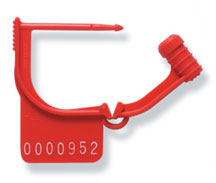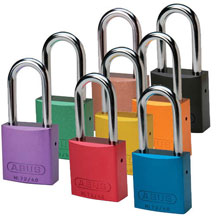| The Home page of ILPI's Safety Data Sheet (SDS) Resource, the leader in SDS information since 1995! | |
| The history and philosophy behind this resource. | |
| A curated collection of books and reference materials concerning Safety Data Sheets and closely related topics. | |
| Paste your plain text SDS into the SDS-Demystifier, and it will be converted into a hypertext-enriched document with links to detailed explanations of each key term. | |
| An extensive list of frequently asked questions about Safety Data Sheets including regulations, content, compliance, and more. | |
| A humorous take on Safety Data Sheet jargon. Fill in the blanks on our entry form to generate a personalized Unsafety Data Sheet to share with your coworkers. | |
| Since 1995, we've maintained this massive curated list of the best places to find Safety Data Sheets on the Internet. | |
| Way more than a glossary, this hypertext-enhanced resource covers hundreds of SDS-related terms and expert knowledge. Each entry includes both the SDS relevance and links to additional authoritative resources. | |
| Archived results of Safety Data Sheet related polls taken by some of our millions of site visitors | |
| You are here! The OSHA regulations behind SDS regulations, including the inspection guidelines and over 400 official interpretations letters under the Hazard Communication Standard | |
| Commercial suppliers of SDS authoring and management software as well as cloud compliance services. | |
| Commercial companies that will create SDS's for your specific needs as well as SDS translation companies. |

Safety signs, banners, and scoreboards? Get yours at Safety Emporium!
| Title: 09/14/1984 - Relationship between the hazard communication standard and the Department of Defense's requirement for safeguarding classified information. | |
| Record Type: Interpretation | Standard Number: 1910.1200 |
ILPI Notes: This interpretation is based on and references the original HCS 1986 which, along with HCS 1994 is now obsolete. While some parts have been deleted or changed, the conclusions of this interpretation appear consistent with the current regulation (HCS 2012).
September 14, 1984
Mr. H. Theodore Werner
Senior Division Counsel
Motorola, Inc.
4350 E. Camelback Road
Phoenix, Arizona 85018
Dear Mr. Werner:
You have inquired about the relationship between the Occupational Safety and Health Administration's (OSHA) Hazard Communication standard [in context: HCS 1994 | current regulation: HCS 2012] (48 Fed. Reg. 53280-53348, November 25, 1983) and the Department of Defense's (DOD) requirements for safeguarding all classified information to which defense contractors have access. The several written and oral communications which have followed your initial letter indicate that you apparently have a general interest in this issue rather than an actual problem requiring resolution.
Solicitor's Office attorneys have contacted the Defense Department personnel responsible for procurement and for security. They have also examined the pertinent OSHA and DOD documents. The staff has concluded, based on its discussions and research, that the OSHA standard and the DOD contractual requirements, as set forth in the "Industrial Security Manual for Safeguarding Classified Information", are generally compatible. Therefore, defense contractors should be able to protect the safety and health of their employees while upholding the security interests of the United States. The bases for this conclusion are set out below:
- Many of the hazardous chemicals that Motorola can expect to be using when the Hazard Communication standard takes effect [Note: HCS 1986 took effect May 26, 1986] will have no security implications. Therefore, Motorola will be required to comply with the hazard disclosure requirements regarding those substances.
- Insofar as circumstances arise in which Motorola supplies hazardous chemicals directly to DOD customers, the Armed Services Procurement Regulations (ASPR) [Note: this is now called Federal Acquisition Regulations (FAR)], Clause 7-104.98, requires that contractors provide hazardous material identification and material safety data sheets. The Government then uses this information to apprise its employees of hazards to which they may be exposed in the course of their work. Thus, regardless of the Hazard Communication standard's [in context: HCS 1994 | current regulation: HCS 2012] applicability, contractors are already required to transmit hazard information "downstream" to their DOD customers.
- Motorola need not make chemical hazard disclosures to downstream employers who receive materials containing hazardous chemicals which have been processed into "articles" (see sections 1910.1200(b)(5)(iv) [in context: HCS 1994 | current regulation: HCS 2012] and (c) [in context: HCS 1994 | current regulation: HCS 2012]). This means that Motorola is not required to disclose the identity or properties of hazardous chemicals which have been used, for example, to make plastic tubes as long as the "articles" do not "release or otherwise result in exposure to, a hazardous chemical under normal conditions of use." (See section (c).)
- Downstream employers receiving hazardous chemicals subject to DOD security regulations from Motorola would also, most likely, be DOD contractors. They would, therefore, be subject to the same security requirements while working with the chemicals, and subject to the same notification requirements (see point 2, above) when delivering products to the Defense Department.
- The Industrial Security Manual (see paragraph 5(c)) specifies that "Contractors shall ensure that classified information is furnished or disclosed only to authorized persons." (See paragraph 3(e).) It is the "need to know" (see paragraph 3(bg)) which determines access to classified information. This need to know permits contractors to disclose classified information to their employees so they can "perform tasks or services essential to the fulfillment of a classified contract or program." Defense contractor employees must safeguard any classified information which they obtain in the course of their work. (See paragraph 5 (f).) Employees' access to classified information is conditioned by satisfaction of the Industrial Security Manual's security clearance procedures. (See paragraphs 5, 20 and 22).
There may be circumstances when security requirements will preclude disclosing the identity of a hazardous chemical to employees. Motorola would inform its DOD contract officer as to the particular situation arousing concern.
Sincerely,
John B. Miles, Jr., Director
Directorate of Field Operations
The original official public domain version of this document is available from OSHA at https://www.osha.gov/laws-regs/standardinterpretations/1984-09-14-0.

